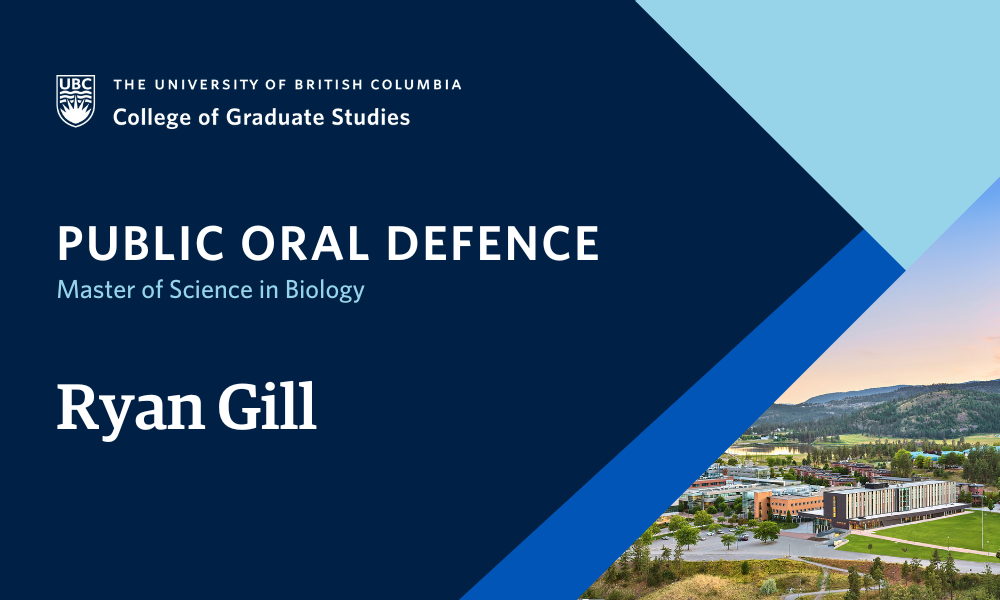
- This event has passed.
Thesis Defence: Navigating coexistence: examining the effects of winter recreation on southern mountain caribou space use and resource selection in shared ecosystems
November 20, 2024 at 9:00 am - 1:00 pm

Ryan Gill, supervised by Dr. Michael Noonan, will defend their thesis titled “Navigating coexistence: examining the effects of winter recreation on southern mountain caribou space use and resource selection in shared ecosystems” in partial fulfillment of the requirements for the degree of Master of Science in Biology.
An abstract for Ryan Gill’s thesis is included below.
Defences are open to all members of the campus community as well as the general public. Registration is not required for in-person defences.
Abstract
Southern mountain caribou (Rangifer tarandus caribou, hereafter SMC) are a federally listed species at risk (threatened) that inhabit deep snow, mountainous environments in parts of British Columbia and Alberta. Winter recreationists seek out these same habitats, with heli-skiing being the predominant recreation that overlaps both spatially and temporally with SMC on their late-winter ranges. In 2020, COVID-19 induced travel restrictions severly limited heli-skiing over the winter of 2020/2021, creating a year where SMC were not exposed to this type of recreation. In this thesis I used data from GPS-collared SMC to compare the movement ecology of SMC during this ‘anthropause’ year against three winters of normal heli-ski operations to elucidate the effect of heli-skiing on SMC space use. During the anthropause year, SMC expanded their home ranges 80 – 120% as compared to years of normal heli-ski operations, but movement rates and resource selection did not change. This change in home range size without an associated change in the available resource quality and abundance may indicate that SMC are restricted in their ability to obtain nutrients under normal heli-ski operations, having potential implications for individual fitness and survival.
I used these home ranges to estimate 3rd order resource selection, accounting for differences among individuals and sub-populations. Resource selection by SMC was predominantly explained by elevation, and slope, but forest crown closure and forest age also help to explain their selection. I also created a resource selection function for heli-skiing, using openly available, anonymized human-movement data from Strava to understand the underlying features selected for by heli-skiers. Heli-skiers primarily select for moderate slopes, mid- to high elevations and aspects other than south. I projected and compared these two resource selection functions to identify where heli-skiing and SMC late-winter range likely overlaps. Southern mountain caribou and heli-skiing select for similar terrain attributes, but heli-skiing is able to exploit a wider range of terrain features, thus a large proportion of the study area is suitable for heli-skiing, but is not also highly suitable SMC late-winter habitat. While there appears to be a high degree of overlap on the landscape, careful management of heli-skiing may be able to reduce those interactions with SMC that are causing reductions in home range size. Better information on the location of skiing and helicopter flight paths will improve the understanding of fine scale effects on this vulnerable species.